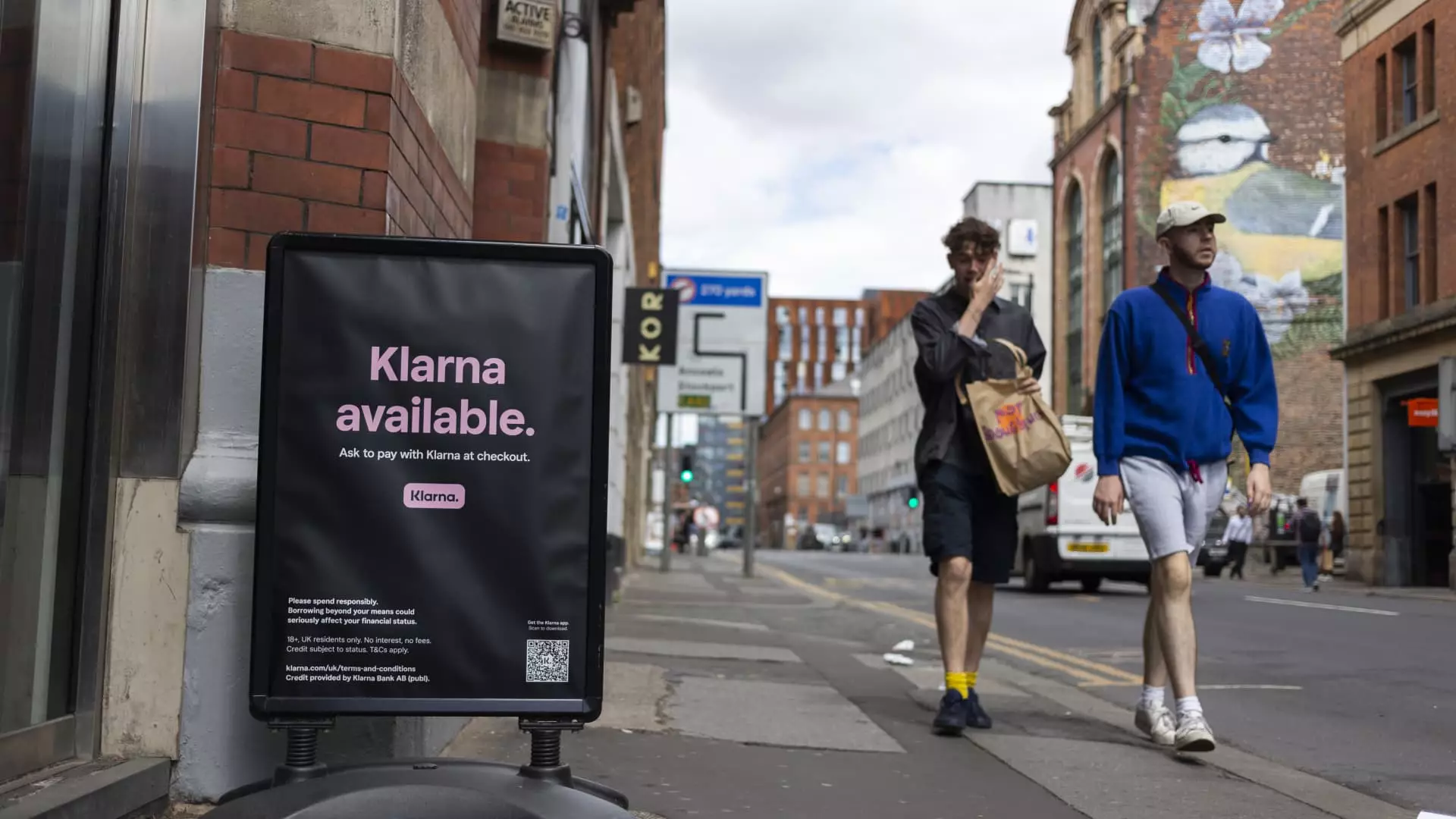Klarna’s impending IPO is stirring up conversations in the financial sector, and rightly so. This Swedish innovator is attempting to break free from the shackles of a punishing economic landscape, having filed its prospectus to go public on the New York Stock Exchange under the ticker symbol KLAR. While the details surrounding share numbers and price ranges are still cloaked in mystery, what’s unmistakably clear is the strategic importance of this move. Klarna’s decision to pursue a U.S. listing isn’t merely an attempt at capitalization—it’s a clear indication of how the financial paradigm is shifting.
In recent years, European markets have struggled to retain tech-centric companies, and Klarna’s migration signifies a burgeoning trend towards U.S. equity markets where visibility and investor interest are higher. This not only puts European tech markets at a disadvantage but also points to a serious need for reform to keep local talent from fleeing. The struggles of European exchanges in retaining homegrown companies should serve as a wake-up call, illustrating the urgent need for revitalization in a sector that has lost its momentum.
From Darling to Dark Horse: A Cautionary Tale
Reflecting on Klarna’s dramatic descent from its pandemic-era glory days—when it boasted a staggering valuation of $46 billion—the company’s story is one of caution, resilience, and eventual recovery. After facing a grim recalibration where its worth shrank by an astonishing 85%, Klarna now finds itself re-emerging, buoyed by a revitalized valuation of around $15 billion. But such volatility should raise eyebrows. If the past has taught us anything, it is that rapid growth can often veer into perilous territory, and the future remains uncertain.
In a society that rewards winners and punishes losers, Klarna’s ability to rebound should be commendable, yet, it also raises questions about the precarious nature of buy now, pay later (BNPL) models. Klarna is not just a cautionary tale but also a litmus test for the sustainability of these business models in an environment where inflation and interest rates are rising. Analysts must closely monitor whether this “rebound” is a genuine turn of fortune or merely a bounce off the bottom.
Consumer Confidence: The Invisible Hand
It is impossible to assess Klarna’s future without addressing consumer sentiment—a crucial driver of its business that has recently taken a hit. The data released from the University of Michigan reveal a disconcerting decline in consumer confidence, falling short of expectations that had already been dimmed by economic unease. When the very consumers who fuel Klarna’s BNPL model are squeezed by tariffs and uncertainty, the implications could spell trouble for its anticipated growth trajectory.
The sad reality is that Klarna’s fate is inextricably linked to broader economic indicators, many of which seem daunting at this moment. Klarna’s CEO, Sebastian Siemiatkowski, remains optimistic, advocating for the removal of high credit card fees that have long plagued American consumers. However, can optimism alone create an environment conducive to sustainable growth? Only time will tell, but weighing current economic realities against aspirations could present challenges that no amount of ingenuity can surmount.
The Competitive Landscape: An Unforgiving Arena
Klarna doesn’t operate in a vacuum; it faces a slew of competition from established financial giants and upstart rivals alike. With firms like Affirm and Afterpay making waves, Klarna’s strategies must pivot sharply if it intends to differentiate itself. The likes of PayPal and Square are actively expanding into lending services, and Klarna must navigate this choppy waters with not just clever pricing strategies but also unique value propositions that resonate with consumers.
Given the financial maturation of companies like Block, which is now poised to offer loans through its own banking arms, the competition’s evolving landscape highlights an urgent need for Klarna to think critically about its operational model. While Klarna’s existing banking license in Europe is an asset, its hesitation to fully take on the U.S. market may present vulnerabilities—a stark contrast to its more aggressive competitors.
Rethinking Consumer Finance: An Opportunity in Disguise
While the hurdles are many, Klarna’s shift to the U.S. is an opportunity to rethink consumer finance as a whole. In an era where high-interest credit cards pervade American households like a bad hangover, Klarna, with the backing of notable venture capitalists, has the chance to position itself as a disruptive force. By capitalizing on its BNPL model while adding innovative features tailored to individual consumer needs, Klarna could do more than just correct its course—it could redefine consumer expectations.
With its projected increase in revenues and profitability, the question remains: can Klarna seize the opportunities laid out before it without falling prey to the pitfalls that ensnared it in the past? The answer may lie not only in its business model but in an acute understanding of the currents flowing through today’s economy.

